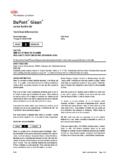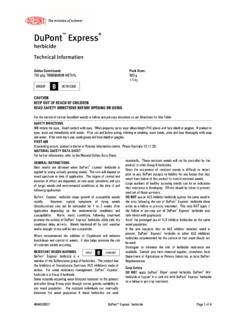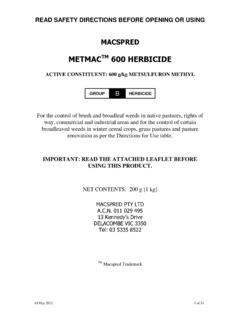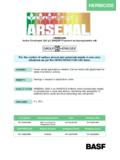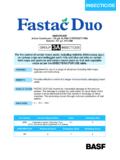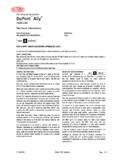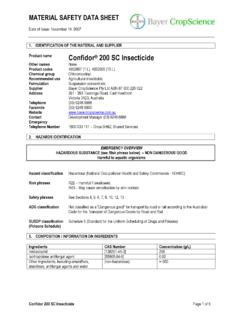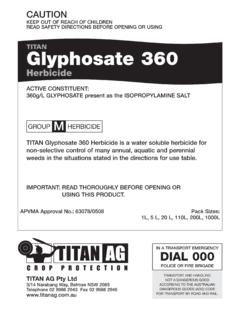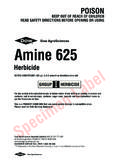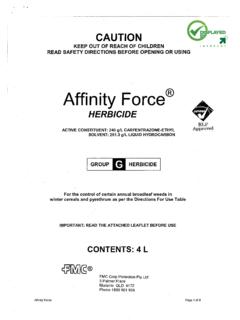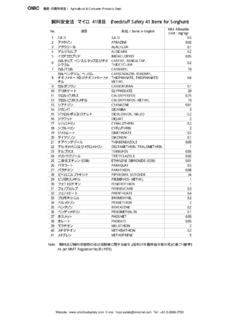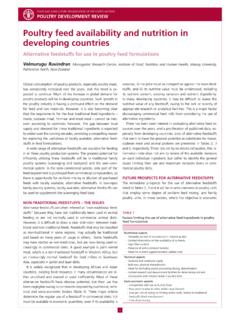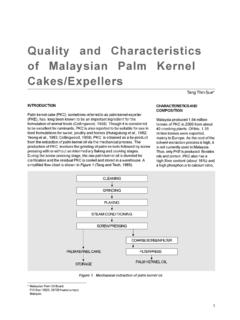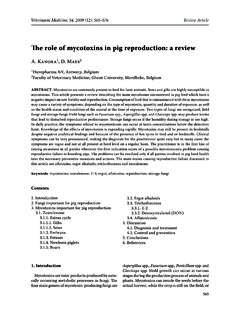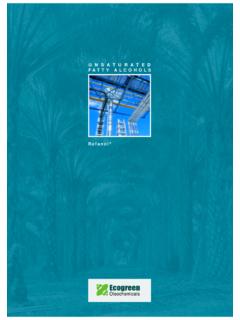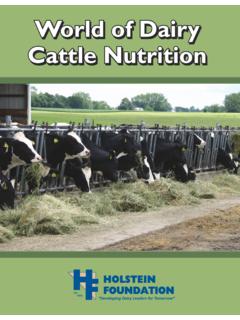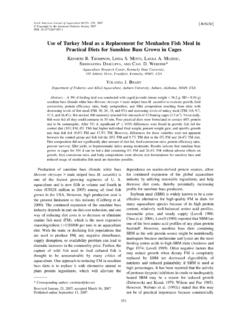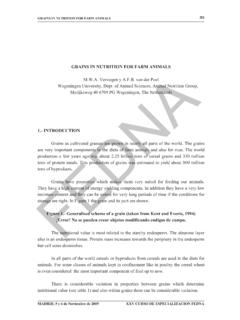Transcription of Material Safety Data Sheet PARAQUAT 250 HERBICIDE
1 Material Safety Data Sheet PARAQUAT 250 HERBICIDE Hazardous according to the criteria of NOHSC Australia. Dangerous according to the Australian dangerous goods (ADG) code. 1. IDENTIFICATION OF THE Material AND SUPPLIER Product trade name: 4 Farmers PARAQUAT 250 HERBICIDE Other names: similar to the product GRAMMOXONE (Syngenta) Recommended use: Rapid knockdown agricultural HERBICIDE . Company name & address: 4 Farmers Pty. Ltd. 067 443 485 70 McDowell St, Welshpool, Western Australia, 6106. Ph: (08) 9356 3445 Fax (08) 9356 3447 643 Murray Street, West Perth, Western Australia, 6005 Emergency telephone number: Australian Centre for Occupational Health and Safety 1800 638 556 (24 hours) 2. HAZARDS IDENTIFICATION Hazard classification: HAZARDOUS SUBSTANCE. DANGEROUS GOODS. Risk phrases: R20 Harmful by inhalation, R24/25 Toxic in contact with skin/Toxic if swallowed, R36/37/38 Irritating to eyes/respiratory system/skin, R41 Risk of serious damage to eyes.
2 Safety phrases: S1/2 Keep locked up/away from children. S13 Keep away from food, drink, and animal feeds. S20/21 When using do not eat or drink/do not smoke. S23 Do not breathe vapour or spray. S24/25 Avoid contact with skin/eyes. S36/37/39 Wear suitable protective clothing/gloves/eye/face protection. S38 If insufficiently ventilated wear suitable respiratory equipment. SUSDP Classification: S7 ADG Classification: Bipyridilium pesticide, liquid, toxic. UN Number: 3016 3. COMPOSITION Substance CAS Number % content TWA (mg/m3) STEL (mg/m3) PARAQUAT (as dichloride) 1910-42-5 25 Pyridine 110-86-1 Low 16 Emetic Low Water 7732-18-5 To
3 100 TWA time weighted average airborne concentrations for an eight hour day for a five day week for a working life. STEL short term exposure limit 4. FIRST AID MEASURES Skin contact: Immediately remove any contaminated clothing. Wash skin thoroughly at least 15 mins with soap and water. Seek immediate medical attention. (Clothing must be thoroughly washed before re-use). Eye contact: Immediately irrigate with running water for at least 15 mins (hold eyelids open). Seek immediate medical attention. Ingestion: Go to a doctor or hospital IMMEDIATELY. If possible phone ahead to alert to the situation so treatment is not delayed on arrival.
4 If more than 15 mins away, induce vomiting preferably using Ipecac syrup. - 1 - Material Safety Data Sheet PARAQUAT 250 HERBICIDE Inhalation: Remove from exposure. If vapour has been inhaled, lie patient down comfortably and keep warm. Monitor closely and seek medical attention if effects persist. (Vapour consists of stanching agent rather than PARAQUAT ). If spray mist has been inhaled, immediately seek medical attention. Monitor patient closely and apply resuscitation or oxygen if available. (Spray mist contains PARAQUAT ). Note to doctor: Refer to "The Treatment of PARAQUAT Poisoning: A Guide for Doctors". 5. FIRE FIGHTING MEASURES Suitable extinguishing media: Water fog is preferred. Foam, dry powder, CO2 also suitable. Unsuitable extinguishing media: Special hazards in fire: Not combustible as formulated, but residue left after evaporation of water may burn.
5 Fumes are toxic. Required special protective equipment for fire-fighters: Self contained breathing apparatus if exposed to combustion products. Hazchem code: None 6. ACCIDENTAL RELEASE MEASURES Emergency procedures: Wear protective equipment to prevent skin and eyes being affected. Evacuate unprotected and unnecessary personnel from area of spill. If Material is leaking from a container, stop the leak only if this can be done safely. Prevent spillage entering drains or watercourse. Methods for containment & cleanup: Soil is a suitable absorbent, especially soils high in clay. Soil can be used to form bunds to contain spillage. Contaminated soil should be collected for disposal at a suitable landfill. Contaminated area and tools should be washed down with hypochlorite bleach. Personal protective equipment and clothing should be washed with soapy water.
6 7. HANDLING AND STORAGE Handling: For use only by licensed pest-control operators and primary producers. Keep away from food, drink, and animal feedstuff. KEEP OUT OF REACH OF CHILDREN. Wear suitable Personal protective equipment when handling and spraying. Storage: Store in the original container in a dry, cool, ventilated, LOCKED area. DO NOT store in prolonged sunlight. This is a Dangerous Good, UN 3016, Class (Toxic substance). It should not be stored with explosives, oxidising agents, corrosive substances, or nitromethane. Storage of more than 1000L will require a license. 8. EXPOSURE CONTROLS National exposure standards: TWA: PARAQUAT mg/m3, pyridine 5 ppm, 16 mg/m3. STEL not determined. Biological limit values: Engineering measures: Storage and handling areas to be well ventilated, with a dump shower available.
7 Spray only from an enclosed cabin, protected by a charcoal air filter. Personal protection equipment: Eye/face protection: Goggles or glasses to AS 1366, AS/NZS1337 Hand/skin protection: Overalls, PVC gloves and apron, face shield Respiratory protection: Should not be necessary under normal conditions. If spray mist may be encountered, a particulate filter to AS/NZS 1715 should be worn. 9. PHYSICAL AND CHEMICAL PROPERTIES Appearance: Dark blue liquid. Odour: Offensive (pyridine as a warning stench). pH: Slightly acidic. - 2 - Material Safety Data Sheet PARAQUAT 250 HERBICIDE Vapour pressure: Negligible for PARAQUAT , product will have the VP of water. Vapour density: N/A Boiling point/range: 100+ oC (water) Melting/freezing point: approx 0 oC (water) Solubility: Fully miscible with water. Specific gravity - density: approx Flashpoint: N/A Explosive limits (air): N/A Ignition temperature: N/A Other: 10.
8 STABILITY AND REACTIVITY Chemical stability: Stable under normal conditions. Conditions to avoid: High temperature (preferably < 30 oC). Materials to avoid: Metal containers especially zinc, aluminium. This is a Dangerous Good, UN 3016, Class (Toxic substance). It should not be stored with explosives, oxidising agents, corrosive substances, or nitromethane. Hazardous decomposition products: Should not decompose unless heated further after reaching complete dryness. May then produce carbon monoxide, nitrogen oxides, hydrogen cyanide and/or hydrogen chloride. Hazardous reactions: Will not explode, polymerise etc. 11. TOXICOLOGICAL INFORMATION Acute toxicity: CAN KILL IF INJESTED. LD50 ( PARAQUAT ) 150 mg/kg (rat), 30 mg/kg man. About 10 ml of product may be lethal. Kidney and liver damage may occur after 2-3 days. Lung fibrosis after 1-3 weeks may cause death.
9 Higher doses may cause multi-organ failure and death within 2-3 days. Chronic toxicity: No information, but may not be major. PARAQUAT is excreted rapidly. It is not carcinogenic or teratogenic in rats. Possible routes of exposure: Accidental spillage of concentrate or spray mix is a prime concern, as is ingestion of concentrate. Inhalation of spray mist will cause irritation of nasal mucosa, but is unlikely to reach lungs. Vapour pressure of PARAQUAT is negligible. Range of effects. Excessive exposure may affect human health as follows: Skin contact: Intact skin is unlikely to absorb toxic doses of diluted spray. Undiluted product and/or damaged skin presents a significant risk. Eye contact: Any Material in the eye presents a significant risk. Severe irritation may occur resulting in extensive loss of superficial areas of the corneal and conjunctival epithelium, ulcerated areas are at risk from secondary infection.
10 Corneal oedema may persist for up to 3 to 4 weeks with temporary blurring of vision. Inhalation/ingestion: Low dose (<20 mg PARAQUAT ion per Kg body weight = 10mls of a 20 to 24% concentrate) Patients are often asymptomatic or may develop vomiting or diarrhoea. Complete recovery occurs but there may be a transient impairment of lung function tests. Moderate dose (20 to 40 mg PARAQUAT ion per Kg body weight = 10 to 20 mLs of 20 to 24% concentrate) Initially renal and hepatic dysfunction are common. Mucosal damage may become apparent with sloughing of the mucous membranes in the mouth. Dyspnoea may develop after a few days in the more severe cases. By about 10 days crepitations and radiological signs of lung damage usually develop. Renal function often returns to normal at this stage. Massive pulmonary fibrosis manifested by progressive dyspnoea may cause death between 2-4 weeks after ingestion.
